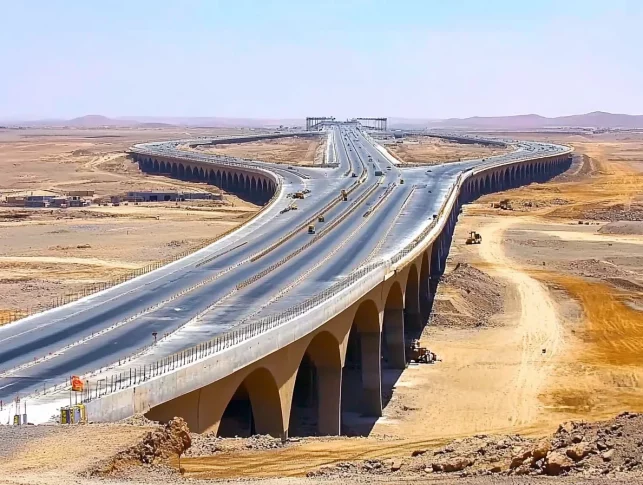The Trans-African Highway (TAH) network is a visionary infrastructure initiative aimed at interconnecting the African continent through a series of transcontinental highways. Spearheaded by the United Nations Economic Commission for Africa (UNECA), the African Development Bank (AfDB), and the African Union (AU), the network is a symbol of Africa’s aspiration for regional integration, economic development, and the realization of the African Continental Free Trade Area (AfCFTA).
An Ambitious Vision
The TAH network comprises nine highways stretching over 60,000 kilometers, designed to connect major cities, ports, and economic hubs across Africa. The network’s primary objective is to facilitate intra-African trade, reduce transportation costs, and boost economic growth by improving access to markets and resources. It also aims to enhance connectivity between landlocked countries and coastal regions, bridging geographical divides and fostering regional collaboration.
Key Routes
Among the nine highways, the Cairo-Cape Town Highway is one of the most ambitious, running from Egypt in North Africa to South Africa in the southernmost part of the continent. Another notable route is the Trans-Sahelian Highway, connecting Dakar in Senegal to N’Djamena in Chad, which provides vital access to Sahelian nations. The Trans-Sahara Highway links Algiers in Algeria to Lagos in Nigeria, crossing one of the world’s most challenging terrains.
Other highways in the network include the Trans-West African Coastal Highway, which connects countries along the West African coast, and the Lamu Port-South Sudan-Ethiopia Transport Corridor (LAPSSET), aimed at integrating East African economies.
Economic and Social Impact
The TAH network has transformative potential. It offers landlocked nations such as Mali, Chad, and Burkina Faso much-needed access to global trade routes. The improved connectivity reduces logistical costs, enabling farmers, manufacturers, and small businesses to transport goods efficiently to markets. For instance, the Cairo-Cape Town Highway facilitates agricultural trade between northern and southern Africa, strengthening food security and economic resilience.
Beyond economic benefits, the highways contribute to social integration and cultural exchange. By connecting diverse regions and communities, the TAH fosters greater understanding and unity among African nations. It also improves access to education, healthcare, and emergency services in remote areas.
Challenges in Implementation
Despite its promise, the TAH network faces significant challenges. Political instability in some regions, inadequate funding, and a lack of coordination among countries can impede progress. Infrastructural gaps, such as missing road segments and poor maintenance, further limit the network’s potential. Additionally, the harsh climates and vast deserts in regions like the Sahara pose logistical and environmental hurdles.
To overcome these obstacles, strong partnerships between governments, private sectors, and international organizations are essential. Innovative financing models, such as public-private partnerships (PPPs), can help bridge funding gaps. Regional collaboration through bodies like the African Union can ensure uniform standards and coordinated implementation.
The Road Ahead
The Trans-African Highway network symbolizes Africa’s determination to unite its people and harness its economic potential. While challenges remain, ongoing investments and partnerships signal a positive trajectory. As the AfCFTA gains momentum, the TAH network will play a critical role in fostering economic integration and positioning Africa as a competitive global player.
By connecting rural villages to bustling cities, facilitating trade across borders, and uniting the continent, the Trans-African Highway is not just a series of roads—it is a pathway to a prosperous and interconnected Africa.
photos : thetravelbible.com

